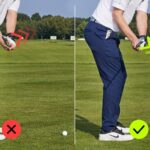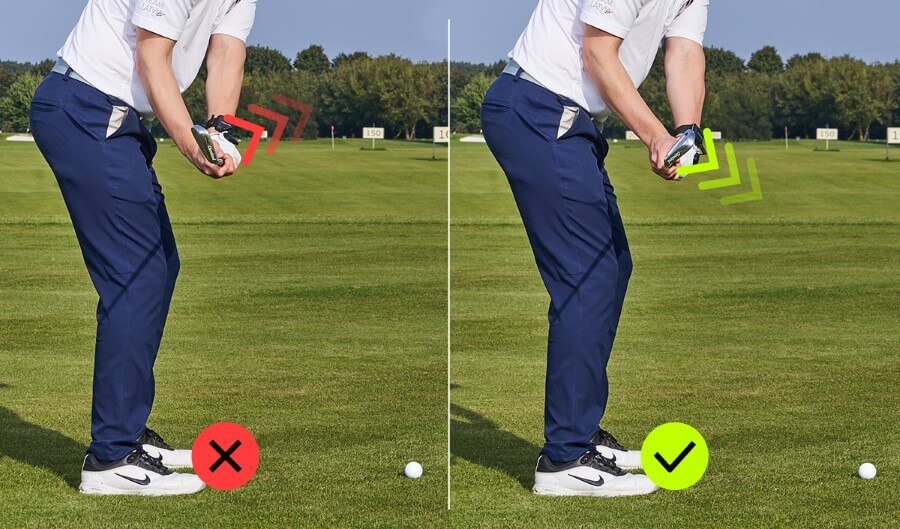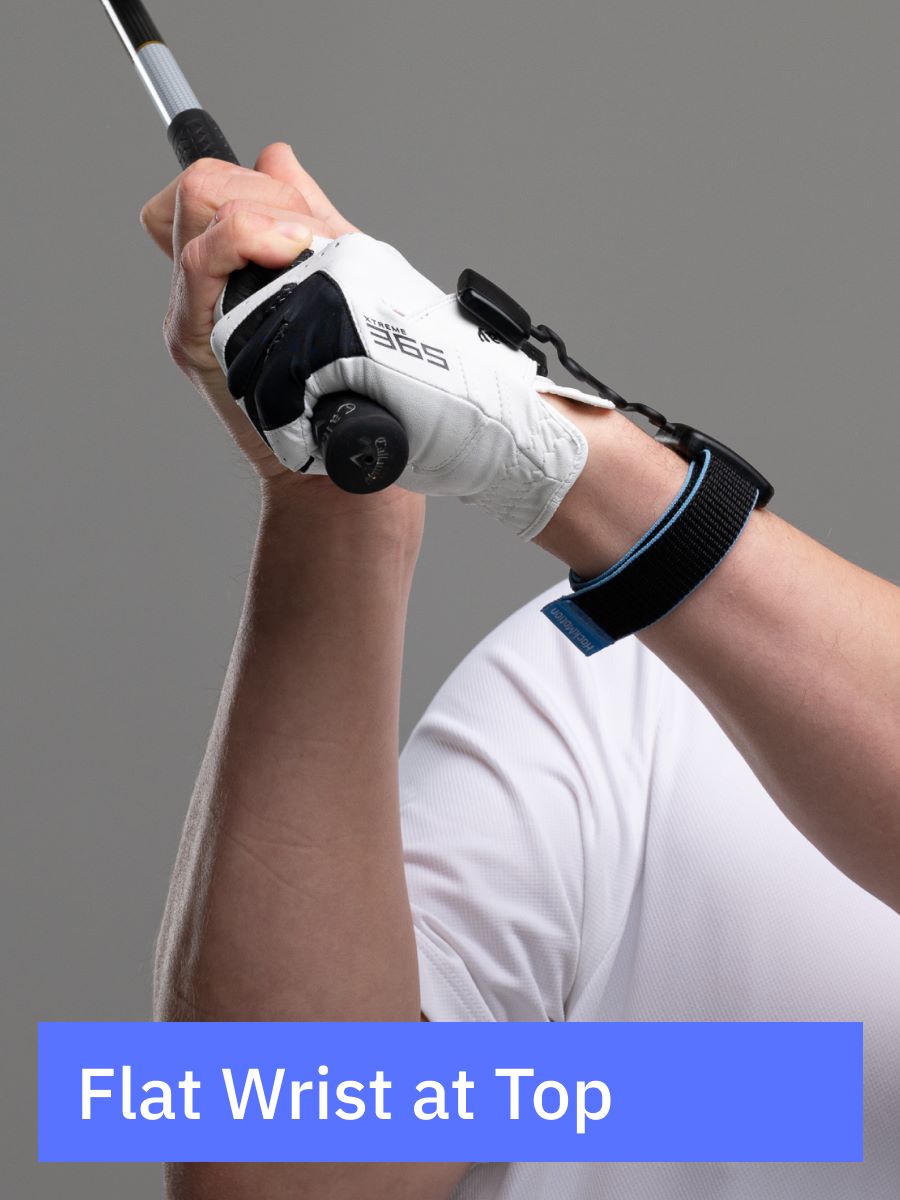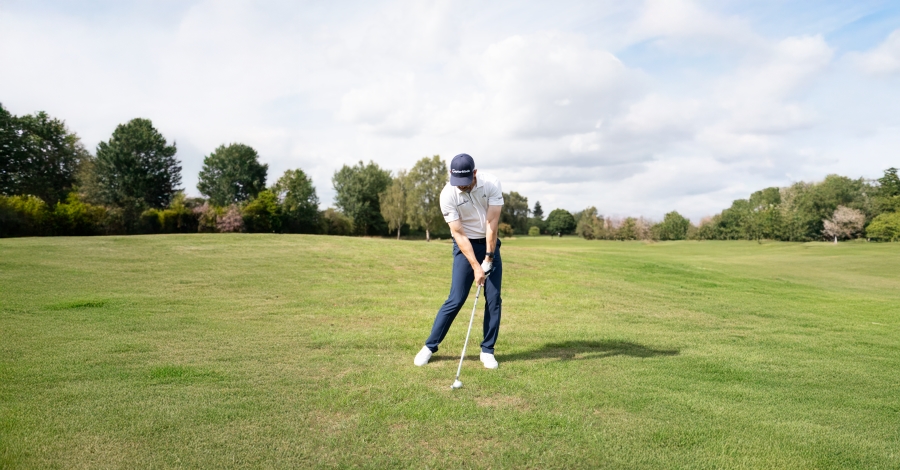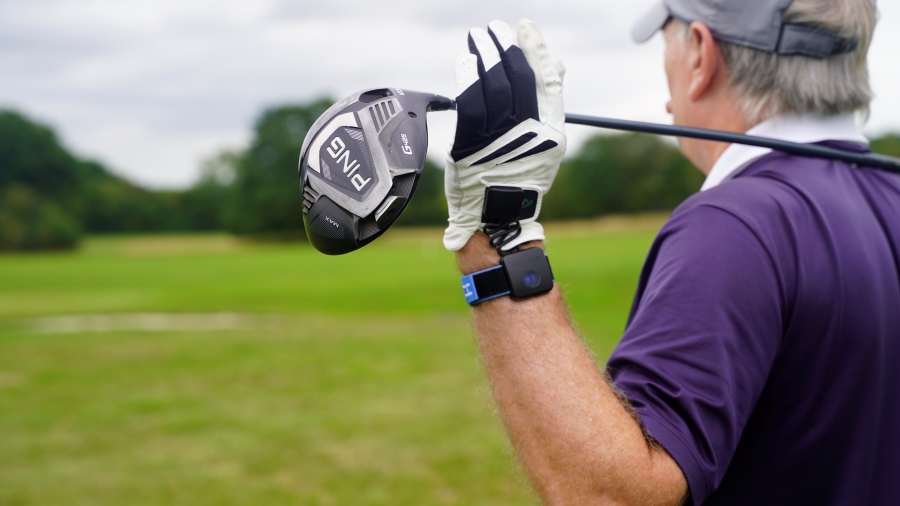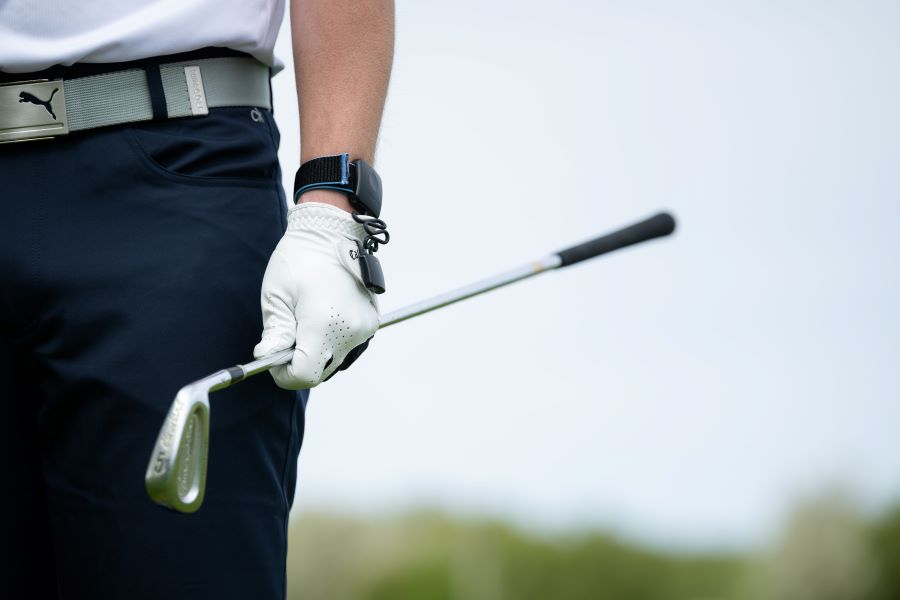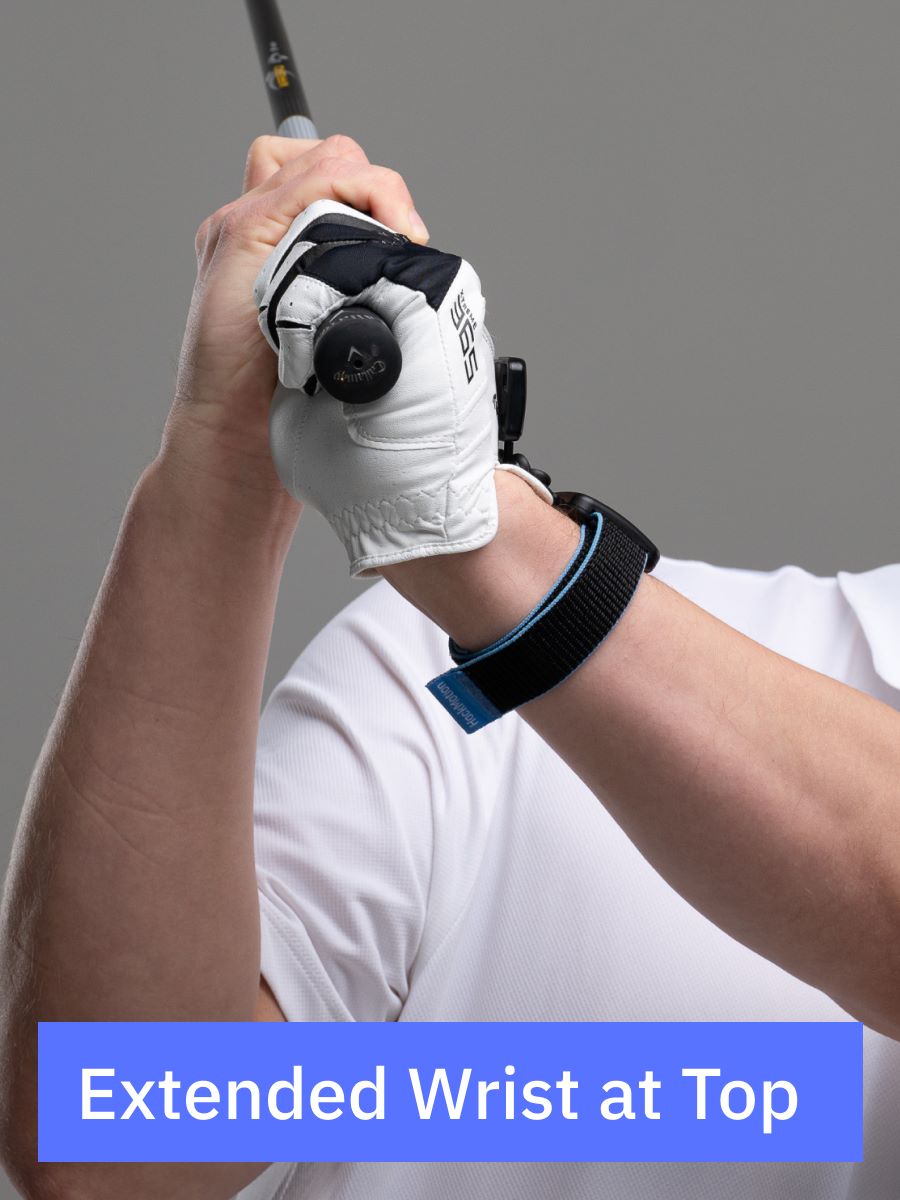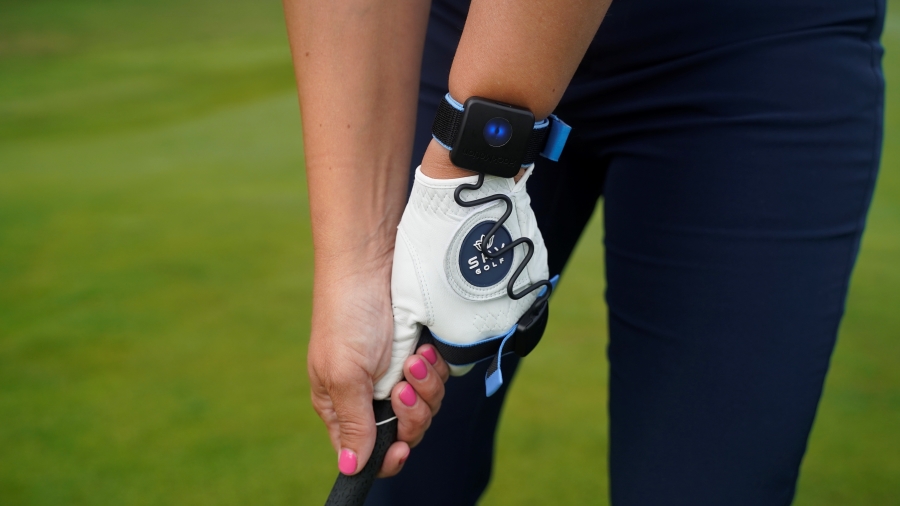How to Master Clubface Control in Golf: Proven Tips & Drills That Work
Until you can consistently control the clubface, golf feels like guesswork. One swing produces a slice, the next one hooks left, and it starts to feel impossible to build confidence.
Here’s the truth: the clubface at impact is the single biggest factor in determining where your golf ball goes. And the wrists, especially the lead wrist, are the key to controlling it.
If your wrist positions are off, your clubface is off. But once you learn how to square the clubface with your wrists, accuracy and consistency become much easier to achieve.
That’s what we’ll cover here: why clubface control matters, how the wrists influence it, and the drills (including HackMotion feedback) that will help you master it.
How to Control Clubface (Key Takeaways)
If you don’t have time to read the entire guide on mastering clubface control, here are the most important takeaways.
- The clubface is controlled by the wrists. Until you are aware of and understand how the wrists work in golf, you’ll have a difficult time controlling the ball flight.
- The biggest issue amateur golfers face with controlling the clubface is creating too much extension in the lead wrist throughout the golf swing.
- Practicing short game shots and swings from waist-high to waist-high will help you master clubface control in the full swing.
- Setup, grip, and stance are important to ensure you are starting the swing with the proper fundamentals to achieve control of the clubface.
If you prefer to learn through video, here is a helpful and in-depth guide on how to master your clubface control.
Contents
Why Does Clubface Control Matter?
The better you control the clubface, the better your chance of hitting the golf ball straight.
The wrist position controls the clubface.
The amount of flexion or extension in your lead wrist at any given time in the golf swing controls the angle of the face.
Most golfers have too much extension or cupping in the lead wrist at the top of their backswing and again at impact. This position can lead to slices and unwanted fades.
How is the Clubface Controlled at Impact?
Once you get to the impact position, it’s too late to fix the clubface position.
The clubface at impact is controlled by:
- Where does your clubface start (i.e. do you have it square when you set it up)
- Grip strength and hand position
- Forearm rotation just before the golf ball
- Lead wrist flexion/extension at the top of the backswing and in the early parts of the downswing.
How Lead Wrist Extension/Flexion Influences the Club and the Clubface
The better the position you can get your lead wrist in throughout the golf swing, the easier it is to control the clubface.
More flexion in the lead wrist closes the clubface, and more wrist extension opens the clubface.

After analyzing more than 1,000,000 golf swings with the HackMotion, we know that the best players in the game have a flat or slightly flexed lead wrist at the top of the backswing.
At impact, these players once again have a flat or slightly flexed lead wrist.
Wearing the HackMotion is like having a coach on your wrist telling you exactly where the issues are in your swing.
How to Improve Clubface Control?
If you are ready to start learning to control your clubface, these are some of the best drills and practice routines to help you get there.
Mastering your clubface control takes time; you’ll have to work on these drills over time for your game to improve.
Adjust Grip Strength
Grip strength isn’t about how tightly you hold the club, it’s about whereyour hands sit on the grip. Turn your hands slightly right for a stronger grip (easier to close the face) or slightly left for a weaker grip (face tends to stay open).
Most golfers play best with a neutral-to-slightly-strong grip. Test small adjustments on short shots until you see straighter ball flight.
Use HackMotion while practicing to confirm your wrist angles stay consistent swing after swing, no matter which grip you choose.
Get the Lead Wrist Flexion Right
Lead wrist flexion at impact is key to getting the clubface square and hitting a straight shot.
There is no perfect wrist angle that is a universal goal for all golfers. However, there are patterns that we see from great players like Tiger Woods, Rory McIlroy, and Tommy Fleetwood.
These golfers do not add extension to the lead wrist in the backswing, and at impact, they have a flat to slightly flexed lead wrist position.
If you can groove this position and start to repeat it in your golf swing, you’ll deliver the clubface square to the ball.
Hit Short Shots Until You Have Control
If you don’t have control over your clubface on a golf swing from waist high to waist high, you won’t have it in the full swing.
One of the best ways to start to learn to master your clubface control is to practice short shots.
Play around with grip position and wrist angles for these shorter shots until you can do it with confidence.
This video gives a few great drills to help you master these important positions in the swing before you move on to full swing clubface control.
Forearm Rotation to Establish Control and More Power
If you remember, one of the things that will impact the angle of your clubface at address is the amount of forearm rotation in your swing, especially when approaching the golf ball.
Proper forearm rotation not only helps to establish control, but it also creates more power in this swing.
Rob Cheney will walk you through how forearm rotation will improve your chance of striking the ball with consistency.
Drills to Improve Clubface Control
If you still need some work on your clubface control, here are a few of the best drills you can work on to become the one who’s in charge of the clubface.
Impact Rehearsal (Waist-High Chips)
Rehearse your ideal impact first, then build speed. This shrinks variables and teaches you to arrive with a square face under control.
Impact Rehearsal (Waist-High Chips) – Step by Step
- Set your “ideal impact” at address: slight forward shaft lean, hips a touch open, weight favoring lead side.
- Make waist-high–to–waist-high chip swings, holding a flat to slightly flexed lead wrist through impact.
- Wear HackMotion and confirm you’re not adding lead-wrist extension into impact. Aim for the green zone on each rep.
- Add speed gradually without losing wrist position.
Intermediate Target Tee (On-Course Helper)
Place an intermediate point a foot in front of the ball to give your brain a face-direction “anchor.” It simplifies intent and helps you keep the face square through the strike.
Intermediate Target Tee – Step by Step
- Stick a tee ~12 inches ahead of the ball on your start line.
- Set the clubface at address to that tee, then commit to swinging past it.
- Feel the face stay square through the tee, not flipping left or hanging open right.
- With HackMotion, verify you keep lead-wrist flexion stable as the club passes the tee.
Motorcycle Drill (HackMotion)
The fastest fix for an open face: learn to add lead-wrist flexion in the downswing so you reach impact with more flexion than at setup.
Motorcycle Drill – Step by Step
- Calibrate HackMotion and take your normal setup.
- From the top, “motorcycle” the lead wrist (add flexion) as the shaft approaches parallel (P6).
- Maintain that flexion into impact; then release naturally.
- Start slowly, check your graph, and increase speed while keeping reps in the green zone.
Release Drill (HackMotion)
Train the release window (club-parallel to club-parallel) so the face squares without a flip. When this window is good, the full swing follows.
Perfect Your Release with HackMotion
Fine-tune your release for consistent contact. Start with a short swing to master control before adding power.
HackMotion Release Drill – Step by Step
- Make short swings from club parallel in the downswing into impact and just past.
- Keep hands slightly ahead of the ball at impact to control loft and face.
- Use HackMotion to confirm your lead wrist remains flat/slightly flexed at impact.
- Do 10–15 quality reps, then lengthen the motion while holding the same wrist numbers.
Final Thoughts
The secret to clubface control is in the wrists. If you can master the wrists in the golf swing using HackMotion, you will have a clubface that is square at impact.
Wearing the HackMotion on the wrist when you practice is like bringing your coach with you to the range. A square clubface means you can work on increasing power and getting the distance that you want out of your game.
All it takes is a little time on the range, the right technology, and the understanding of what goes into having a square clubface.



